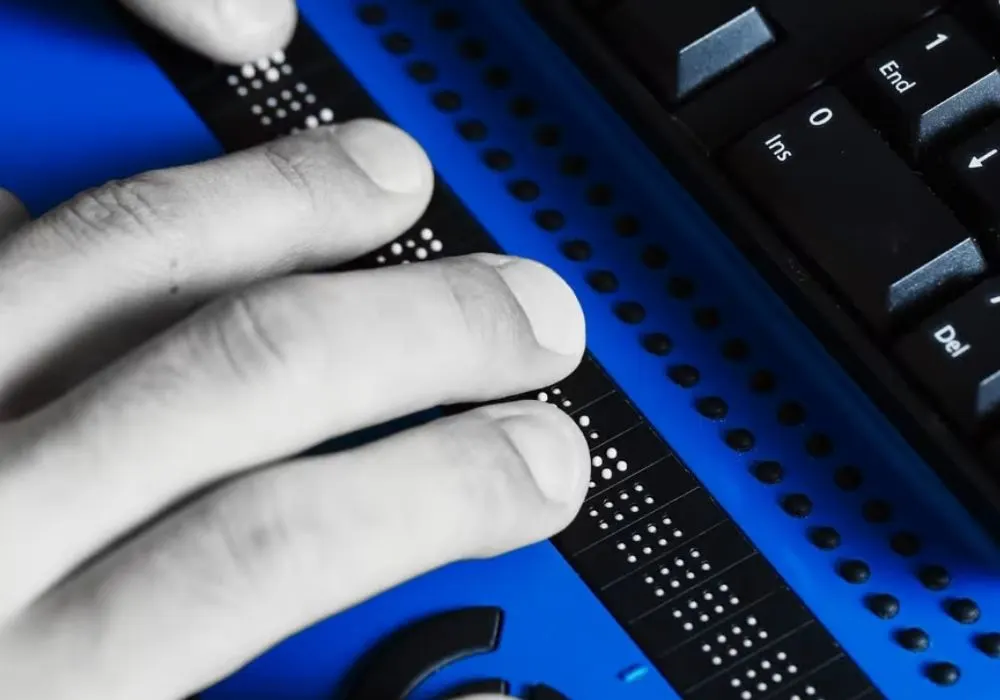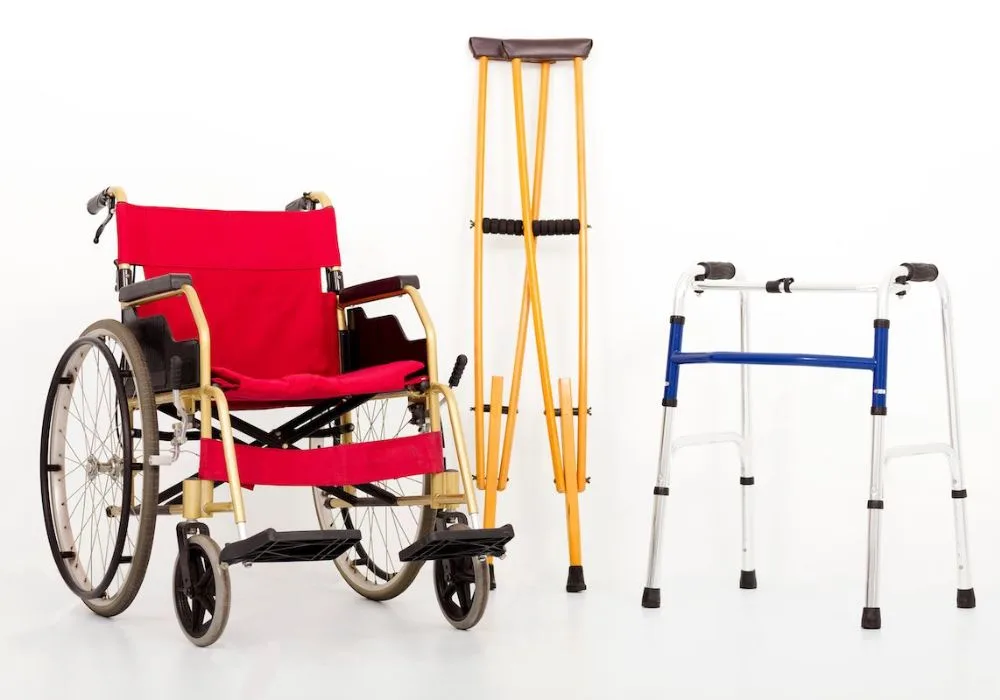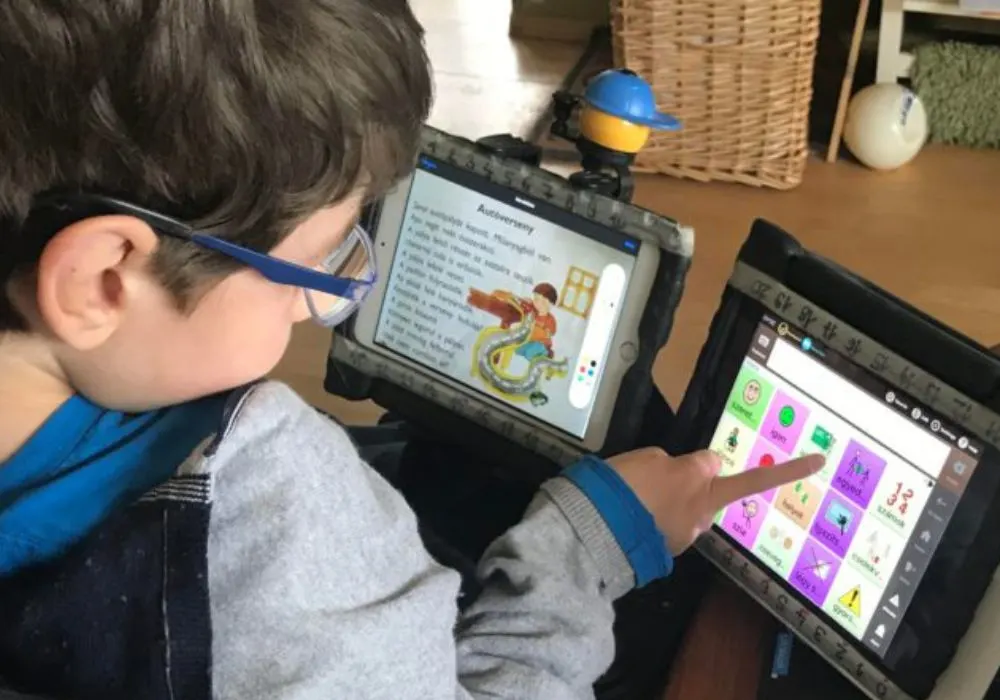Assistive technology plays a crucial role in aiding individuals with disabilities to navigate daily challenges, improve their self-reliance, and enhance their quality of life. This category of devices encompasses a vast array of tools designed to address various impairments, whether cognitive, sensory, or motor. While the concept of assistive technology is not new, today we have more and more options available to us than ever before. From sophisticated software to simple hardware, the main objective of these technologies is to provide users with the means to accomplish tasks that might otherwise be difficult or impossible.
Some of the most commonly used types of assistive technology are those that aid in communication, such as speech-generating devices for individuals with speech impairments. For people with hearing loss, hearing aids, and alerting devices significantly improve the ability to perceive sound and therefore, communicate more effectively. Visual aids like screen readers and magnification applications also stand out as indispensable for those with visual impairments, allowing for greater interaction with digital content.
Additionally, mobility aids such as wheelchairs, walkers, and canes are essential for individuals with physical disabilities, enhancing their ability to navigate and perform tasks independently. Each type of assistive technology is tailored to meet specific needs, and their use can often be adapted or customized to fit the unique requirements of the user, ensuring that everybody has the opportunity to live a more accessible and fulfilling life.

Types of Assistive Technology
Assistive technology (AT) encompasses devices and tools that enhance the capabilities of individuals with disabilities. These technologies are designed to aid people in their daily living, work, and education.
Hearing Aids and Audio Devices

Hearing aids are a common form of assistive technology that amplifies sound for individuals with hearing impairments. They range from small in-ear devices to larger behind-the-ear models. Additionally, FM and infrared systems are used in public spaces to transmit audio directly to individuals wearing compatible receivers.
Visual Aids and Screen Readers

Visual aids include a variety of devices designed for those with visual impairments. Magnifiers and braille displays are common tools that assist with reading. Screen readers convert on-screen information into speech or braille, enabling users to interact with computers and mobile devices.
Mobility Aids and Adaptive Equipment

Mobility aids such as wheelchairs, walkers, and prosthetic devices enable individuals with physical disabilities to navigate and perform tasks more independently. Adaptive equipment also includes ergonomic keyboards and adjustable desks that cater to a wide range of mobility needs.
Communication Devices

Communication devices, also known as augmentative and alternative communication (AAC) devices, support individuals who have difficulty with speech or language. These devices range from simple picture boards to sophisticated speech-generating devices that synthesize text-to-speech for real-time communication.
Benefits and Accessibility Enhancements
Assistive technology offers transformative benefits, improving access for individuals with disabilities. Through targeted enhancements, these technologies remove barriers in various aspects of life.
Education
In educational settings, assistive technology bolsters learning experiences for students with disabilities. Text-to-speech software allows those with visual impairments or reading difficulties to access written material. Electronic worksheets aid students with fine motor skill challenges by providing an alternative to handwriting. Moreover, adaptive keyboards and mice are tailored to individual physical needs, ensuring students can interact with digital content effectively.
Work
The workplace becomes more inclusive with the integration of assistive technology, facilitating equal employment opportunities. Voice recognition software enables those with limited dexterity to perform computer-based tasks using verbal commands. Screen reader programs are essential for visually impaired employees, converting text on a screen to speech or braille. Furthermore, ergonomic solutions, such as adjustable workstations, accommodate physical disabilities, reducing strain and enhancing productivity.
Daily Living
For daily living, assistive technology empowers individuals to perform routine tasks with greater independence. Smart home devices can control lighting, temperature, and other home systems via simple commands, offering autonomy to those with mobility or dexterity issues. Personal emergency response systems (PERS) provide security for those who might need immediate assistance, while hearing aids have advanced to sync with other devices, improving communication for those with hearing impairments.

Selecting Appropriate Assistive Technologies
When choosing assistive technology, identifying the user’s individual needs is crucial. A thorough assessment should consider the user’s physical capabilities, cognitive functions, and daily activities. Matching technology to these needs can maximize independence and enhance the quality of life.
Key factors to be considered include:
- User’s Goals: Understand the specific tasks the user wants to accomplish.
- Environment: Ensure the chosen technology is compatible with the user’s home, workplace, or school.
- Ease of Use: Select devices that the user can operate comfortably and with little difficulty.
- Adaptability: Look for technologies that can adjust to the user’s changing needs over time.
Additionally, it’s important to take into account the potential for technology integration. This includes:
- Compatibility with other devices
- Ability to upgrade software or hardware as needed
Financial considerations cannot be overlooked. The cost of technology should fit within the user’s budget, keeping in mind the:
- Initial purchase price
- Maintenance costs
- Availability of funding assistance or insurance coverage
Finally, the effectiveness and reliability of the technology should be evaluated by reviewing:
- Consumer feedback
- Professional recommendations
- Research studies and testimonials
By systematically evaluating these components, users can find the most suitable assistive technologies to support their everyday needs and enhance their overall functionality.
Integration and Compatibility
Effective integration of assistive technology within existing systems is critical for seamless user experiences. Assistive devices must be capable of interfacing with various platforms, such as Windows, macOS, and mobile operating systems like Android and iOS.
- Screen Readers:
- Compatibility: They must work well with web browsers and office software.
- Integration: Allows seamless navigation and reading of digital text.
- Speech Recognition Systems:
- Compatibility: Should understand various accents and dialects when integrated with operating systems.
- Integration: Enhances user interaction with smart home devices and applications.
- Refreshable Braille Displays:
- Compatibility: Need to support a wide range of applications, particularly those for text editing and web browsing.
- Integration: Connects via USB or Bluetooth to computers and smartphones for real-time text translation.
When assessing compatibility, it is important to consider the software updates and hardware interfaces. The assistive technology should remain functional after system updates, and the hardware should easily connect with existing ports or wireless technologies.
Multi-device support is a key aspect of integration, where users expect their assistive devices to sync with different gadgets they own. For example, a hearing aid should work with phones, tablets, and television systems without requiring complex setup processes.
The goal is to ensure that assistive technologies enhance, rather than impede, the efficiency of daily tasks. Industry standards and best practices play a crucial role in achieving this, demanding continuous collaboration between developers, manufacturers, and end-users.
Future Outlook and Trends
Assistive technology is evolving rapidly, influenced by advancements in artificial intelligence, the Internet of Things (IoT), and robotics. In the coming years, personalization will be a key trend. Devices that adapt to an individual’s specific needs will become more prevalent, utilizing user data to optimize functions.
Integration with smart home technology will enhance the autonomy of users. Voice-controlled systems and automated environments will make daily routines more accessible. Innovations like smart wheelchairs are expected to incorporate navigation systems, offering greater independence.
Wearable technology is gaining traction. Devices like smart glasses and advanced hearing aids are set to become more intuitive, providing users with real-time information and greater interaction with their environment.
A table illustrating potential developments in the near future:
| Technology Type | Expected Improvements |
| Mobility Aids | Integration with automatic door openers and gesture-based controls |
| Communication Devices | Enhanced speech-generating devices with natural language processing |
| Learning Aids | AI-driven tutors for personalized learning experiences |
| Daily Living Aids | IoT-enabled appliances for easier operation |
Researchers and developers are focusing on creating cost-effective solutions to improve access to assistive technologies. Governments and organizations are likely to emphasize the importance of inclusive design principles, ensuring products serve a wider populace efficiently.
As machine learning technologies improve, assistive devices are expected to exhibit higher levels of cognitive understanding, further aiding users in complex tasks. The industry is poised for continuous innovation, striving to overcome barriers and empower individuals with disabilities.Remember, accessibility is an option. It’s required by law. We encourage you to learn more about the Accessibly App and get a free trial to see all of its fantastic features for yourself.





